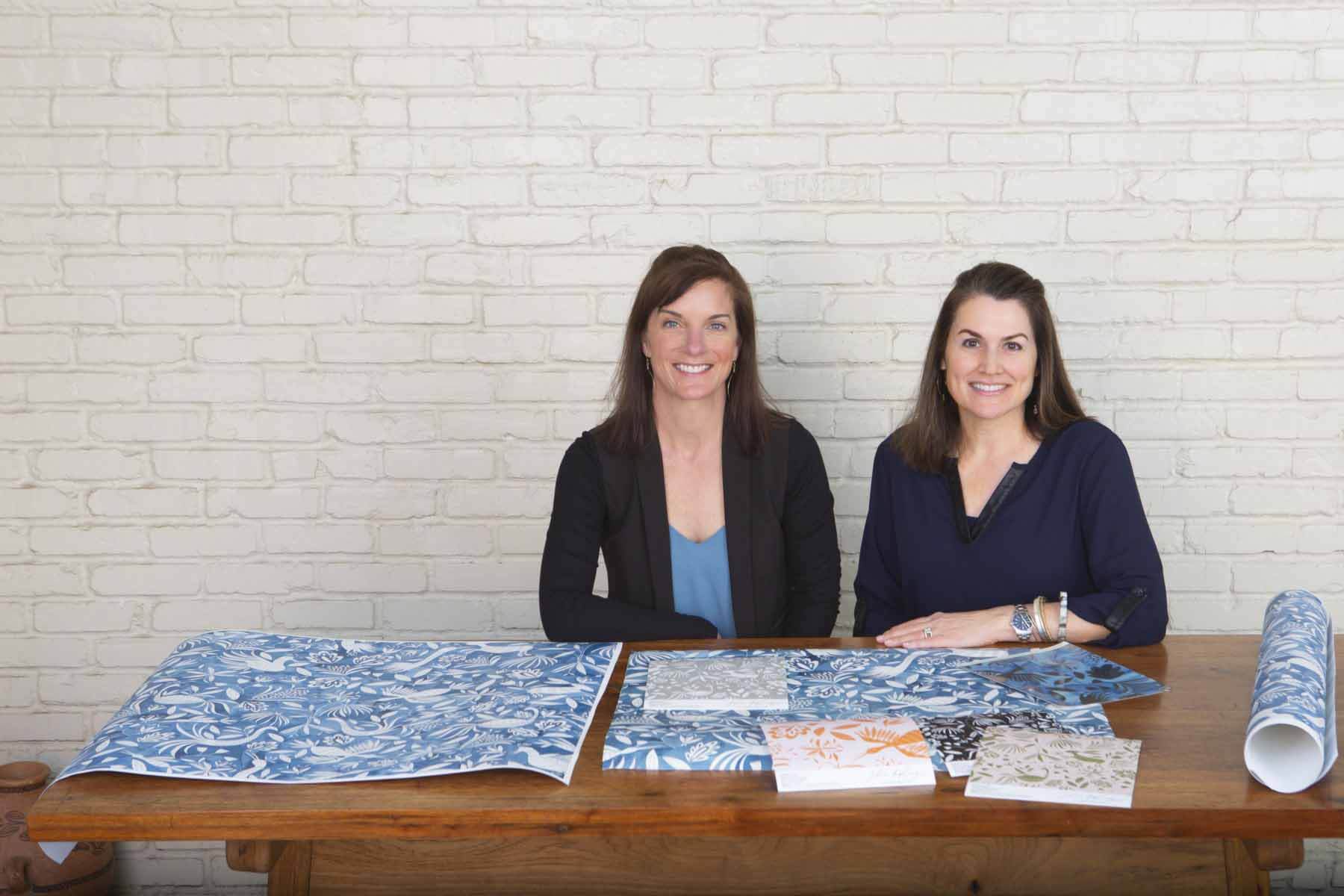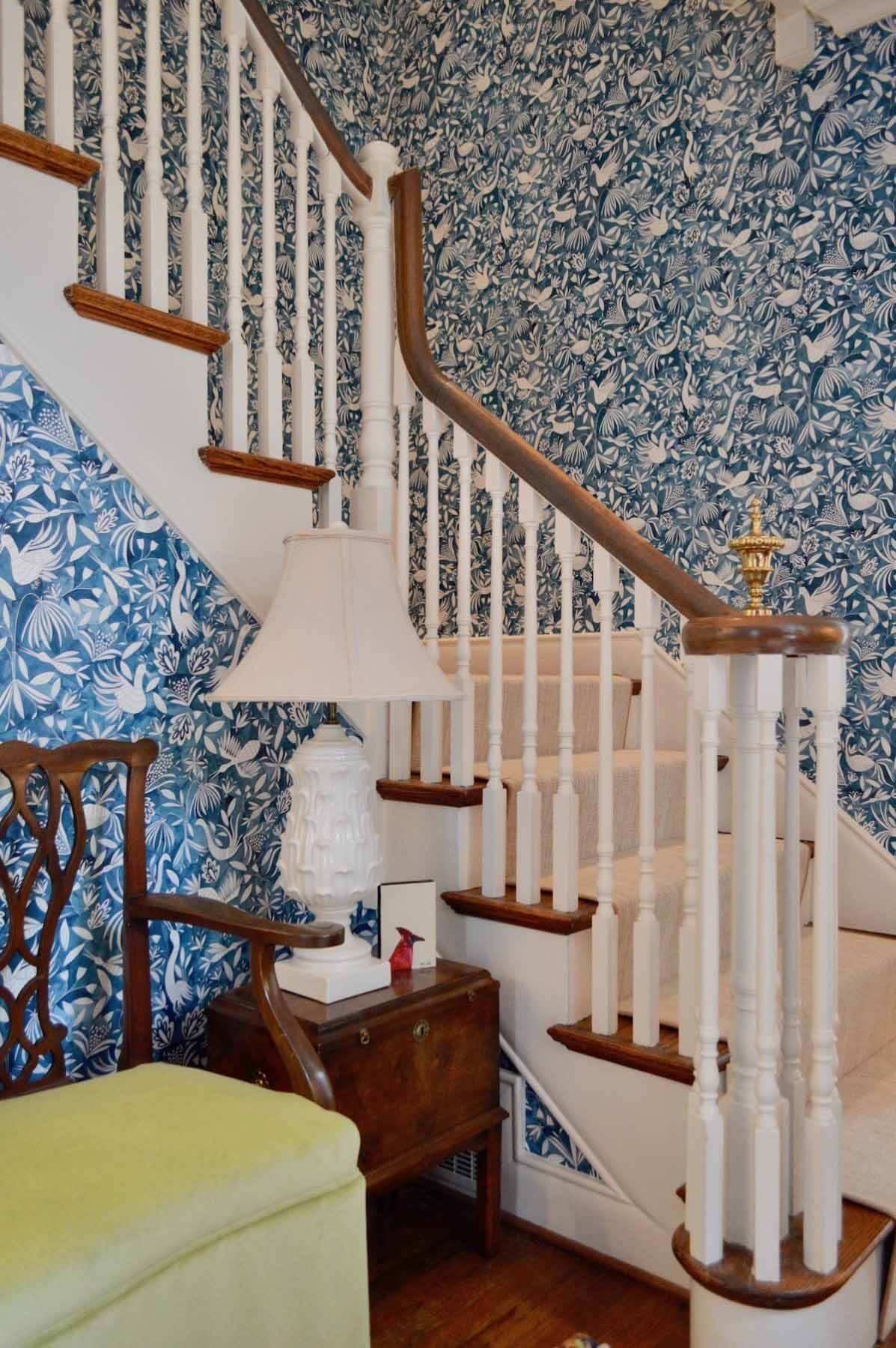Jennifer Lapidus, Stephanie Summerson Hall, Katherine Stratton Miller and Rowanne McKnight have one thing in common: they are some of the most inspiring and interesting female Southern makers of the moment. Respectively, they rethink the connection between farming and baking, how to artfully entertain and how art is consumed. Collectively, they create products we don’t want to live without.
Carolina Ground Flour, Estelle Colored Glass and Julia Kipling continue to grow in popularity, and we’d like to introduce you to the women behind these budding brands.
Jennifer Lapidus, Founder & General Manager of Carolina Ground Flour
Jennifer Lapidus was a baker before she started a micro mill that specializes in locally grown grains. Nearly three decades ago, she was an apprentice baker producing Flemish naturally leavened bread known as desem. This whole-grain, naturally leavened bread begins with freshly milled whole-grain flour. Learning to mill and understanding the significance of fresh stone-ground flour — for “flavor, tooth, and vibrance” — was, for Jennifer, part of becoming a baker. Carolina Ground Flour is an expansion of this learning, understanding and appreciation. The North Carolina mill uses ancient technology to deliver stone-ground and cold-milled unbleached bread flour, pastry flour and rye flour.
Baking bread became one of the most talked-about hobbies last year, and Carolina Ground saw an uptick in sales to at-home bakers. Although some have traded their culinary pastimes for other ventures, many have become lifelong bakers. Those who fall into the latter category will be as eager to get their hands on a copy of Jennnifer’s upcoming book as they were to get their hands on her flour. It is Jennifer’s mission to “connect the farmer, miller, and baker — and through the baker, bring the story of their daily bread back to their community.” Southern Ground: Reclaiming Flavor through Stone-Milled Flour includes 80 recipes from 20 acclaimed craft bakeries in the South that showcase superior cold stone-milled flour and highlights the importance of baking with locally farmed ingredients.


Tell us the story of starting your brand.
After running my bakery for 14 years, milling in-house and baking bread in a wood-fired brick oven (while raising my daughter in sync), I stepped away from baking only to be pulled back in as a miller. This was 2008, and the price of wheat had just skyrocketed, which highlighted the reality that all of the bakers I knew in Western North Carolina (including myself) were disconnected from the farmers growing our grain/flour, which was grown at least 1,000 miles from where we were baking. At the same time, public breeder Dr. David Marshall of the USDA-Agricultural Research Service based in Raleigh, NC, had just released two varieties of regionally adapted bread wheat (after eight years of trialing). Suddenly, we had seed varieties available that could withstand the humidity of the Southeast. The Southeast typically grows a godly amount of wheat, but soft (pastry) wheat, not hard (bread) wheat. I connected the dots and began Carolina Ground.
We are a micro mill that cold-stone mills our flour and produces around 2,000 pounds of flour a day. Most flour mills are huge — 100,000 pounds of flour a day is considered a “small” industrial mill. The milling industry processes their grain to flour with steel rollers that separate the bran from the germ and endosperm, and they can remove the oily germ and create a shelf-stable product. They are incredibly efficient, but the result is a different product compared to stone-milled flour, which is milled intact. Cold-stone milling means we do not mill above a certain temperature threshold — never above 100°F to protect that oily germ, which is packed with nutrients and flavor. Although we can produce a sifted flour, the oily germ is crushed into the flour, so even our most sifted flour is a creamy hue, never white.
RELATED: The Story Behind the Bag You Keep Seeing
This year, more people embraced the idea of the home chef — how did that impact your business?
It was insane. Our online sales were crazy, and many of the people seeking our product had zero baking experience. I was editing my book at the time, and it really made me slow down and think about baking from the perspective of someone who knew nothing. Up until that point, our online retail customers were mostly avid home bakers. It was a big learning curve on many fronts for us but all good stuff — other than this really sad pandemic.

Learn more about Carolina Ground Flour, shop the products, get recipes and more at carolinaground.com.
*****
Stephanie Summerson Hall, Founder of Estelle Colored Glass
Stephanie Summerson Hall discovered her love of colored glass early, during treasure hunting trips with her grandmother. When Stephanie built a home of her own, she searched for colored glass stemware sets only to find that colored glass was a dying art form. The market gap led her to begin researching how to create a brand of colored glass cake stands and stemware. She spent five years working on Estelle Colored Glass, inspired by and named for her grandmother Estelle. The luxury brand of hand-blown colored glass was founded in Charleston in October 2019 and quickly rose to fame. Glass artisans craft the glassware in Poland, and the vintage-inspired line feels right at home on today’s tables.
What are you doing differently to stand out in the industry?
We have partnered with a 100-year-old heritage glass-making company that we worked with to formulate all our color offerings and design our pieces, which makes our offerings one-of-a-kind and gives our brand niche offerings.


What do you hope to accomplish with your designs and your company?
We hope to start a revival of colored glass and introduce it to a whole new generation while reigniting fond memories in persons who remember colored glass pieces from the past.
What is your favorite style in your collection?
I don’t have a favorite category, but I do have a favorite color, which is lavender.
Describe your two years in business in one word.
Amazing! We have had an incredible response to the pieces, and we love that the word used most by our followers to describe them is “obsessed.” We are so grateful and could not ask for more.


See the entire collection of Estelle Colored Glass, shop for your own pieces and find retailers at estellecoloredglass.com.
*****
Rowanne McKnight & Katherine Stratton Miller, Founders of Julia Kipling
Artist Katherine Stratton Miller has captivated art lovers with her playful, colorful works that depict everyday objects and showcase her appreciation for the beauty of Mexican embroidery. As she began painting Otomi scenes, she knew she wanted to translate them into wallcoverings and fabric. Rowanne McKnight represents Katherine’s artwork as the director of Nashville Artist Collective and recognized the wallcoverings’ potential to take off. Together they established Julia Kipling, a brand that made its debut in the spring of last year. Although the quiet kickoff was not what they planned, they have been grateful for the extra time to think through sampling, invoices, accounting, and branding. The line includes four collections (Classic, Poolhouse, Powder, and Metallic) that depict the Otomi scenes in varying colorways and configurations, plus a classic cane print.
This is only the beginning of Julia Kipling, and we are thrilled to see what comes next.
What are you doing differently to stand out in the industry?
Rowanne: We made the choice to print our wallpaper on Type II commercial-grade paper. We wanted to be able to serve our commercial designers, as well as our residential ones. The papers have durable backing, are more flame retardant, more environmentally friendly, and, best of all, can be cleaned safely with soap and water. We thought the combination of art, style and real-life was important. We also custom print every order, which cuts down on waste and keeps the cost in check. Spoiler alert: Wallpaper is an investment, just like that gorgeous rug.

RELATED: 5 North Carolina Jewelry Designers You’ll LOVE
What do you hope to accomplish with your designs and your company?
Rowanne: We hope to bring the joy of artistic design into one’s home and fill their little corner of the universe with a punch of color and spunk (sprite/energy/delight/whimsy).
What is your favorite collection or design?
Katherine: Today I really like the powder blue colorway patterns, particularly the Otomi Vine Grand and the Caning in our Powder Collection. And I am completely obsessed with the Virgo colorway in our Metallic Collection. The blue Virgo hue is somewhere in between a navy and a marine with a bit of cobalt, and it’s really magical coupled with the gold.
Rowanne: I am like a mama bear — they are all “my favorites.” The softer colors help rugs and furnishings pop. The bolder combinations make my personal heart sing because I love color.
Describe your first year in business in a few words.
Rowanne: Exciting, dynamic, educational, humbling.

Learn more about Julia Kipling and explore the collections at juliakipling.com.
**********
Get the best of the South delivered right to your inbox. Subscribe to StyleBlueprint!


















